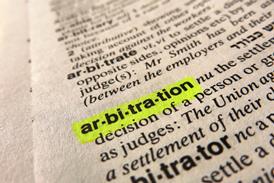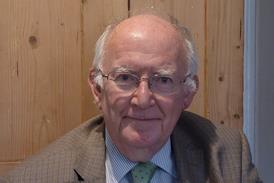Nearly five years after Brexit, UK businesses and their lawyers are still navigating its impact on intellectual property (IP) rights. In addition to territorial and jurisdictional differences, digitisation makes it easier to register large numbers of trade marks and patents. Meanwhile, developments in artificial intelligence are raising new legal challenges around the use of copyrighted content for training large language models such as ChatGPT. And who owns AI-generated works and the output of automated invention processes?

Brexit
The regulatory landscape has shifted too. The UK’s exclusion from the Unified Patent Court (UPC) represents a substantial loss, observes Jane Lambert, intellectual property barrister at 4-5 Gray’s Inn Square.
‘Most IP practitioners had been looking forward to the UPC or its predecessor ever since the Community Patent Convention,’ she says. ‘It was one issue on which all British governments had been exemplarily communautaire. London was to host part of the Central Division of the Court of First Instance. UK patent attorneys have rights of audience before the UPC, but counsel or solicitors do not. We have also lost the right to practise before the Court of Justice of the European Union (CJEU), the General Court and the Boards of Appeal of the EU Intellectual Property Office. And as we are outside the Brussels Convention and can’t join Lugano, it is harder to serve process and enforce judgments in the EU.’
Charles Courtenay, an IP litigator at Michelmores who handles cross-border US-UK work in computer software and technology, shares Lambert’s regret. ‘The life sciences division was going to be in London, and to drop it was a sadness, both to lose that institutional knowledge and the ability to interrelate with neighbours.’
The connection has not been entirely lost, explains Nina O’Sullivan, partner and head knowledge lawyer (contentious) at Mishcon de Reya. ‘In the first year of operation of the new court, we have seen a significant volume of cases being filed in the German Local Divisions, which will no doubt influence the way in which cases before the UPC are litigated. However, several UK law firms – including Mishcon de Reya – as well as patent attorney firms, are advising and representing clients on a number of matters before the UPC and it is a central pillar to the advice that we provide in relation to patent litigation strategy in Europe.’
The UPC has indeed been busy. Figures published at the end of October show that since the court began operations in June 2023, it has received 538 cases, of which 206 are infringement actions, 52 are applications for provisional measures, 50 are revocation actions, while the Court of Appeal has received 109 appeals. English is the predominant language of cases heard at the Court of First Instance, representing 52% of proceedings, with German second at 41%.
Dr Beatriz San Martin, IP partner at Arnold & Porter, breaks down the post-Brexit IP landscape into two main issues: ‘The increasing divergence of UK law from EU law since Brexit, and the UK’s non-participation in the new UPC, which has jurisdiction over patents granted by the European Patent Office, including the Unitary Patent system. However, patent law has not changed too much, as the UK is a signatory to the European Patent Convention.’
San Martin adds that the UPC has changed the dynamic of where parties may choose to litigate their patents in Europe, and increased the scope for ‘forum shopping’. ‘While the UPC is already popular, the UK Patents Court is as busy as ever, and there is no evidence of a shift from UK courts to the UPC. The UK is also piloting a shorter trial scheme for patent cases, with a view to capping costs in less technical and less complex cases. We also have the Intellectual Property Enterprise Court, a forum for small and medium enterprises, where costs and damages are capped.’
She predicts: ‘The UPC could become more of a threat to the US patent litigation landscape if it is seen as a place where you can litigate quickly, with quality, predictability and certainty at a lower cost than in the US.’
Recent case law underscores the differences between the UK and EU copyright law, and the latest decisions are starting to clarify the UK’s position. For example, the long-awaited High Court judgment from IPEC on 11 November in the WaterRower v Liking case relates to the boundaries of UK copyright law and its requirements for securing copyright protection for functional items.
The judge applied the higher threshold required by UK law (as opposed to EU law), ruling that the WaterRower wooden rowing machine did not meet the requirements for a ‘work of artistic craftsmanship’. It is likely that the decision will be appealed, given its significance in relation to the boundaries of copyright law.
As Iona Silverman, partner at Freeths, explains, it was stated explicitly that WaterRower would have been protected under EU copyright law. ‘This is guidance we have been waiting for,’ she says. ‘Going forward it means that people who may have been on the fence about the ability to use copyright to protect fashion and functional objects that also have aesthetic appeal will have to register design rights in order to protect their goods.’
Furthermore, as O’Sullivan observes, this decision ‘has brought to the fore the difficulties in resolving the already existing tension between the UK and EU approaches to protection of works of applied art, which ultimately may require resolution by the legislature’.
Discrepancies between trade mark regimes are proving unfavourable to UK businesses in particular sectors. Charlotte Bolton, IP partner at Michelmores, explains: ‘If a UK business registers an EU trade mark for a product it wants to sell in the EU first, that extinguishes its right to stop unauthorised sales in the UK, whereas if an EU business registers a trade mark in the UK first, it still has the right to stop unauthorised sales in the EU – so basically British brands selling into the EU cannot rely on the same IP protection as EU brands selling into the UK.’
She adds that this issue manifested in fashion brands expressing concern about showing their collections at London Fashion Week, as a public display of their works would affect their design rights differently than if they chose Paris or Milan.
There are plans to update the legislation in both the EU and the UK, but it remains to be seen whether this will be in the direction of alignment. ‘The EU has recently finalised plans to update its laws relating to protection and enforcement of designs. We expect the UKIPO to issue a consultation around the UK design framework shortly, but this is another area where businesses and designers will need potentially to navigate nuances in the different regimes,’ says O’Sullivan.
On 13 November the Supreme Court made another landmark ruling. In SkyKick UK Ltd and anor v Sky Ltd and ors, it found that Sky’s filing of overly broad trade marks amounted to bad faith applications, and that SkyKick’s cloud migration marks had not infringed Sky’s marks, highlighting the growing trend of companies applying for multiple trade marks across sectors and categories when they have no intention of operating in those markets. (See Update, p30.)
Courtenay observes that the digitisation of registration processes has made it easier to register a trade mark. Both the Chartered Institute of Patent Attorneys and the Chartered Institute of Trade Mark Attorneys have expressed concerns about Chinese-headquartered companies in particular registering trade marks in bulk to flood the register and occupy a particular space.
Life sciences and artificial intelligence
A new report commissioned by Arnold & Porter on the impact of AI in the life sciences industry found that IP presents significant concerns for businesses in the sector. Some 74% of respondents reported a high level of concern about facing AI-related IP issues in the upcoming year.
In relation to biomedical products, the report highlights the need to think about IP before applying AI tools to patient data. Companies using AI for clinical trials to manage patient data or analyses must also consider avoidance of infringement of IP rights and compliance with data protection rules, and AI-specific legislation such as the EU AI Act, which affects any company offering goods or services using AI anywhere in the supply chain in the EU.
Arnold & Porter IP partner Dr Beatriz San Martin outlines the current position between the UK and the EU when it comes to life sciences and pharmaceuticals. So far there is minimal divergence between the two regimes, but she says this is likely to change.
‘Supplementary protection certificates (SPCs) extend the exclusivity on medicinal products after patent expiry for a maximum period of five years,’ she says. ‘The EU SPC regulation needed to be amended in the UK to protect those rights, and there have been decisions around the conditions for obtaining those rights.
‘So far we’ve had a Court of Appeal decision, several High Court decisions and 10 UK IPO decisions, which have all aligned with CJEU guidance. But they were all pre-Brexit and there are new CJEU referrals. I foresee divergence as the courts think about cases in different ways; the UK won’t have to follow the CJEU. Having said that, as long as the underlying law is similar they will look to what the EU is doing, even though they aren’t bound by it. Meanwhile, the EU is looking to reform the process of obtaining SPCs, and they will be quite different to their UK equivalent.’
Training genAI models
The biggest divergence between the UK and the EU in terms of IP rights is in AI and copyright; and specifically text and data mining (TDM). This arose, San Martin explains, because the UK did not implement the Copyright and AI directive 2019/79 on copyright and related rights in the digital single market. ‘That directive includes the text and data mining exception. In the EU companies can mine text and data and AI developers can train their models on copyrighted work unless rights-holders have expressly opted out. While the UK consulted on a similar exception, this was dropped. So at the moment, UK law does not have that exception.’
There are also questions over the ownership of AI-generated content. Julia Dickenson, of counsel at Baker McKenzie, observes: ‘The UK is ahead of many other countries as the Copyright Designs and Patents Act contains provisions relating to the ownership of content generated by computers. The general view is that a human contribution is needed in order for there to be a chance of claiming IP in AI-generated works, but the extent of that human contribution is not yet settled.’
Another hot topic is whether training AI models constitutes copyright infringement. ‘This is about input and output,’ says Silverman. ‘The input is that tech companies want to train their AI models on everything they can access online. But the content creators, musicians and artists are saying no and looking for a test case.’
In the US, publishers and creatives are suing OpenAI, Microsoft and others for using their copyrighted works. ‘AI may or may not be infringing the copyright in that content, but it is using it for a commercial purpose,’ Silverman says. ‘We might well see collective licensing, but the tech companies will fight that as it means they will have to pay for content. And in October prime minister Sir Keir Starmer said in a letter to the News Media Association that the government recognises “the basic principle that publishers should have control over and seek payment for their work, including when thinking about the role of AI”.’
Turning to the output, ‘sometimes AI unwittingly creates content which would constitute trade mark infringement’, says Silverman. She is referring to the Getty Images lawsuit against Stability AI which is pending trial before the High Court in London. Part of the evidence is that Stable Diffusion generated images with Getty watermarks on them – because that is how Getty images appear on the internet.
On 11 November, the House of Lords debated a question from Liberal Democrat peer Lord Clement-Jones about the government’s policy position on the relationship between IP rights and the training of generative AI models.
Courtenay, who in addition to practising at Michelmores sits as a cross-bench peer, asked a supplementary question that referred to the Hamburg Regional Court’s decision (on 27 September) dismissing a lawsuit brought by a photographer who sued (not-for-profit) AI company LAION for using his images in its LAION 5B data set to train its AI models. The same dataset was also used to train other AI models, including Stability AI’s Stable Diffusion. The dispute between Getty Images and Stability AI, again over copyright, database and trade mark infringement, is pending trial before the High Court in London.
The position would change if the government introduced a new commercial TDM exception – currently the only UK exception is for non-commercial purposes. ‘The government has gone back and forth on whether to introduce this over the last few years but it seems there is now a concrete intention to do so,’ says Dickenson.
TDM exception alignment
‘We understand the reasoning behind [this] is to ensure the UK remains competitive in an increasingly innovative AI market and… keeps up with other countries with similar exceptions,’ she continues. ‘While we understand discussions are still ongoing regarding the format of this potential new exception, it seems likely it will be similar to the opt-out mechanism found in Article 4 of the Copyright Directive. This would mean all content openly available online could be used for AI model training unless the website owner has opted out in a machine-readable way.’
Matt Hervey, head of legal and policy at Human Native AI, says: ‘Since the last government decided not to implement the EU exception for commercial TDM, there have been growing concerns that commercial AI development has been forced elsewhere. Some AI companies have openly warned the current government that they will locate new data centres elsewhere.’
He adds: ‘Any extension to TDM is a headache for the government; it needs to balance the interests of our creative and technology sectors. Both are highly valuable to our economy and both are high profile and influential.’
While publishers want no further exceptions to copyright protection, and AI developers want an absolute right to train on copyright works, he says: ‘It seems inevitable that the new government will adopt the EU approach: an exception to copyright to allow all training commercial AI, subject to the right of copyright owners to opt out, and AI developers required to disclose their use of copyright works.’
However, the government’s position is still unclear and stakeholders want certainty. Hervey explains their frustration. ‘After five years of drift, we really need government to strike a balance so that the real work can start – figuring out the significant technical and practical problems making opt-outs and disclosure work. The EU is crystallising its position on these in the next nine months and UK rights-holders and UK AI companies need to know the UK government position to engage in shaping solutions that are compatible with our largest trading bloc.’
Joanna Goodman is a freelance journalist





























No comments yet